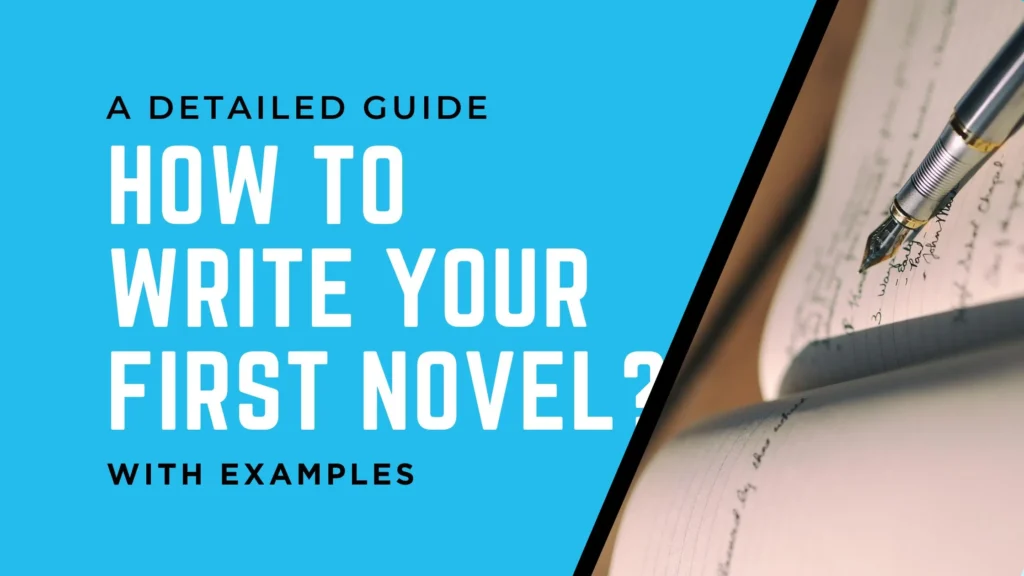It often happens to creative people that they come up with a novel or story idea that is fascinating, but it is often dropped. Because writing your first book feels like a daunting endeavour. Whether you are writing an imaginative story or truths in non-fiction, it can become a tiring process if you miss out on understanding the foundational elements. Such as the key differences between genres, character development, and creating conflict are crucial while writing a book.
This guide offers insights from bestselling authors, literary theories, and writing experts to provide a comprehensive roadmap for aspiring novelists. Understanding and examining proven frameworks and analysing successful novels will equip you with the tools to transform your ideas into a compelling manuscript. Let’s dive into it.
Best Novel Self-Publishing Service
Should I Write Fiction or Non-Fiction First?
For beginner authors, it is essential to understand the key differences between fiction and non-fiction. This can help you choose your area of interest to work in.
Fiction is a genre that provides ultimate creative freedom to writers without being limited to factual accuracy. For instance, writers can write about their imaginative ideas, either inspired by their inner self or the outer world.
On the other hand, non-fiction is all about real people, events, and experiences shared by authors in a book form. It completely depends upon factual accuracy and provides practical, deep insights to readers.
Fiction offers greater flexibility for first-time writers to play with plot and character development without the pressure of factual accuracy, while non-fiction may suit those with specialised and vast knowledge.
How to write a book from start to finish
What Is the Best Structure for Writing a Novel?

The 3-Act Structure
This is a timeless framework that divides stories into Setup, Confrontation, and Resolution in the following way:
- Act 1 (Setup):
Here, you should introduce characters, settings, and the inciting incident.
- Act 2 (Confrontation):
Try to escalate conflicts through rising action.
- Act 3 (Resolution):
Then add resolution to all the central conflicts.
The 3-act structure provides clarity, making it ideal for first-time authors. Tools like Plottr can help visualize these beats during outlining.
The Hero’s Journey
Being famous by Joseph Campbell, this mythic framework follows a protagonist’s transformative arc, such as:
1.Departure
The hero leaves their ordinary world.
2. Initiation:
Trials and mentorships build skills and self-awareness.
3. Return:
The hero applies newfound wisdom to restore balance.
While originally used in epics, this structure underpins modern bestsellers like Harry Potter and Star Wars.
Alternative Structures
Apart from the above methods, there are other alternatives such as Linear narrative, which unfolds events chronologically and creates real-time tension, while non-linear narrative flashbacks into the past can deepen the mystery, but this requires proper planning.
How Do You Create Compelling Characters in a Story?
Crafting Multidimensional Personalities
Characters thriving on motivation, growth, and flaws can drive them into a tragedy. Authors can consider:
- Back story:
How past experiences shape present behaviours in one’s life.
- Relationships:
Alliances and rivalries reveal hidden traits in the surroundings.
- Contradictions:
A philanthropist with a volatile temper feels more human.
Pro Tip; Show, Don’t Tell
Try to reveal character traits through actions instead of dialogues, for example, instead of saying X is a genius, depict his intelligence through his actions. This builds credibility in the reader’s thoughts and emotions.
How Do You Create Conflict and a Strong Story Arc?
Internal vs. External Conflict
In external conflict, the character deals with and struggles to tackle outer world matters, while in internal conflict, the character struggles with internal tensions of emotions and thoughts, such as an identity crisis.
Designing Story Arcs
Authors should put well-placed arcs in the story to balance the emotional tension and release, and escalate towards a shocking resolution at the end. However, you can use foreshadowing and stakes while writing the story.
What Can We Learn from Bestselling Debut Novels?
Combines 3-act structure with technical detail, using Mark Watney’s problem-solving to drive momentum.
Non-linear timelines and unreliable narration create suspense.
A memoir blending personal conflict with broader themes of education and autonomy
These novels are the best examples of debut novels and exemplify how structure, character depth, and conflict intertwine to captivate readers.
What Are the Best Writing Tips for First-Time Fiction Authors?
- Outline Relentlessly:
Use tools like the Hero’s Journey template to map key beats.
- Write Daily:
Consistency trumps inspiration. Set achievable word-count goals that can be adjusted in your daily routine.
- Seek Feedback:
Seek feedback from beta readers, who can highlight blind spots in pacing or character motivation.
- Revise Ruthlessly:
First drafts are exploratory, but remember that editing refines the narrative.
Final Thoughts
Writing your first novel is more about a journey of discovery. By understanding and selecting the right genre, mastering the structural frameworks, and breathing life into complex characters, you can transform your rough ideas into a story that resonates with its audience. Keep in mind that even best-selling authors began with a single-page work and turned their ideas into best-selling novels. Embrace the process passionately, edit and revise fearlessly, and let your innovative voice shine!




